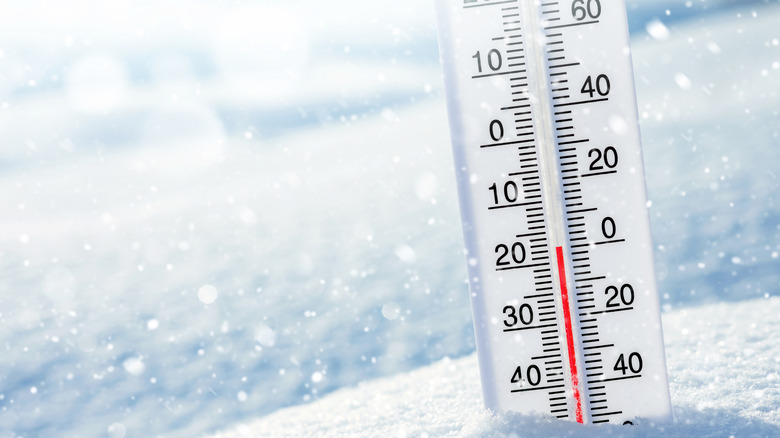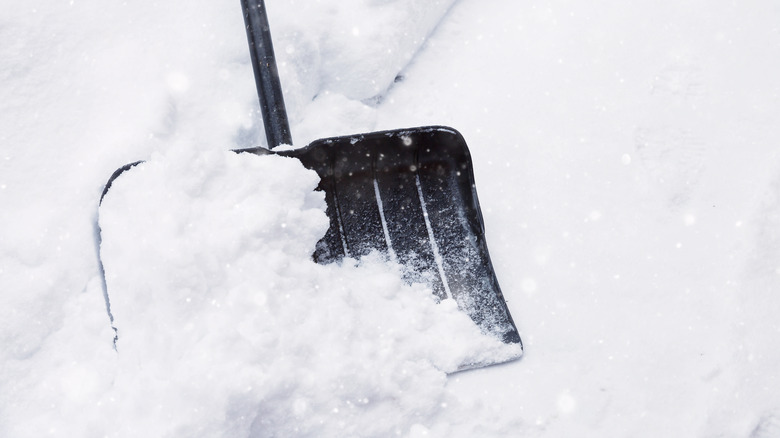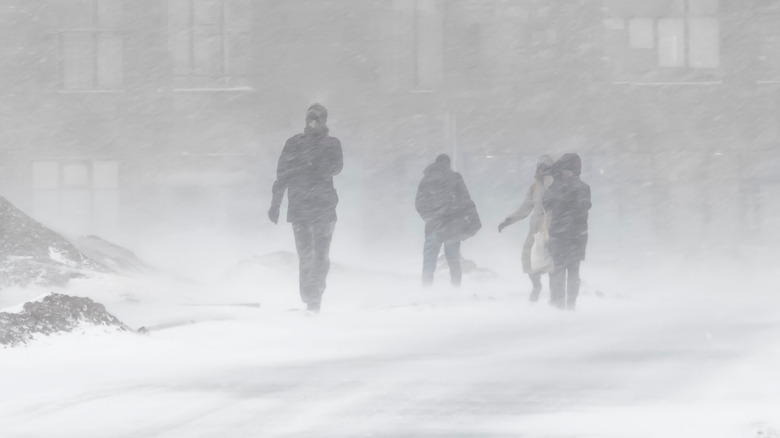What Was The Deadliest Blizzard In History?
The National Weather Service defines a blizzard as a severe snowstorm with strong winds and very low visibility. During a blizzard, wind gusts must reach a speed of at least 35 mph, blowing snow at such an intensity that you can only see ahead a quarter of a mile or less. In addition, for a severe snowstorm to be considered a blizzard, the bad weather conditions must last at least three hours.
Technically speaking, it doesn't even have to be snowing for a blizzard to occur, according to Forest Preserve District. Let's say you have a heavy snowfall on a calm day with little wind. Then on the next day, an Arctic cold front moves in, causing temperatures to drop very quickly and winds to pick up speeds of up to 60 mph. This could lead to something called a "ground blizzard," where wind lifts the snow already on the ground and blows it around with such force that you experience blizzard-like conditions even though it's not actually snowing.
Some of the worst blizzards in history have combined all three: massive snow dumps, wild wind, and extremely low temperatures. When a whiteout is added to the mix, things get significantly worse. Whiteouts usually happen in Polar regions, but can also occur in special circumstances during extreme storms anywhere else. According to AccuWeather, whiteouts occur when visibility is reduced to near zero. This means that if you extend your arm forward, you might not be able to see your hand anymore.
One of the biggest blizzards ever happened in the US
The Great Blizzard of 1888 was the deadliest winter storm in U.S. history. It was a surprise storm in mid-March and struck the northeastern states with hurricane-strength winds, dumping 22 inches of snow across New York City and Boston and up to 50 inches in more rural areas (per Insider).
On March 10, when cold Arctic air from Canada caused a rapid plunged in temperatures. By the next morning, the heavy snow and wind gusts of up to 85 mph had caused a whiteout in NYC. According to History, many city residents and tourists took refuge in hotel lobbies — and that included Mark Twain, who was in New York at the time. More than 400 people died over the course of just a few days.
The world's second-deadliest blizzard in modern history happened in Afghanistan in 2008. It resulted in over 900 human casualties and the deaths of more than 300,000 farm animals. Over 170,000 were diagnosed with pneumonia and other acute respiratory problems, according to CNN.
It all started when sudden cold air from the North Pole drove temperatures down to minus 22 degrees Fahrenheit. Add to that a massive storm system that resulted in the fall of over 100 inches of snow, and you have a very deadly storm.
Mother Nature was merciless during the biggest blizzard in history
The deadliest blizzard in history happened in Iran in 1972. The storm started on February 3, and by the time it was over on February 9, over 4,000 people were dead, and 200 villages had completely been buried and were never recovered (via Mental Floss).
During the storm, the entire country received an average of 9.8 feet of snow, although southern areas saw as much as 26 feet. According to Mental Floss, that's the equivalent to a two-and-a-half story building. The weight of the snow destroyed power lines, crushed vehicles, and buried roads and trains.
TimesNowNews report that many people died in their own homes, as temperatures reached minus 13 degrees Fahrenheit and families found themselves trapped inside buildings without heat or water. When rescued workers arrived on February 10, their digging efforts found only frozen bodies and no survivors throughout entire villages. Among the missing was an American college student that had gone mountain climbing near Tehran. According to the The New York Times, the rescue team that went looking for her was also lost in the 39 inches of snow that covered the area.
After a 24-hour break, the blizzard picked up force again on February 11. Rescue troops were forced to leave the area, and on their way out, dropped two tons of bread over the snow, hoping it would temporarily feed survivors until the army could return. The efforts, however, were largely unsuccessful and entire villages and towns succumbed during history's most deadly winter storm.


